The journey of any work of art can be interesting in how it is used, forgotten and then reused. As I write this I think it’s endemic of Ravilious’s life that there can be no area or topic on him that hasn’t been probed or turned into a book, but onward I go with my quest for originality.
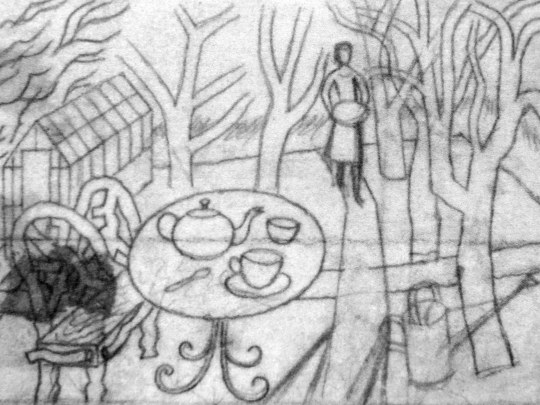
Eric Ravilious – Sketch for Tea in the Garden, 1936
In 1936 Eric Ravilious made a wood engraving for London Transport. Tea in the Garden was made to be used in newspaper advertisements for the Green Line bus service, a decorative vignette to go with commuter information. It is a rather abstract design but it was the start of the commuter lifestyle as London was building a new wave of suburbia and you can imagine the print being used with slogans like “home in time for tea” or “enjoy the garden, 20 mins from the city by bus”
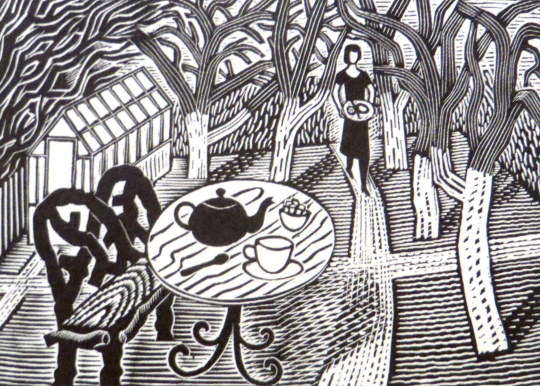
Eric Ravilious – Finished print of Tea in the Garden, 1936
Soon after Ravilious reused the design for a commission with Wedgwood, he was so busy during this point that many designs where recycled from wood engravings to watercolours or china. Below you can see a sketch drawing for a teapot design using the woodblock above. Carving out the legs of the bench and inverting the colours of the table so when printed the transfer will be black and an enamel colour wash painted over.
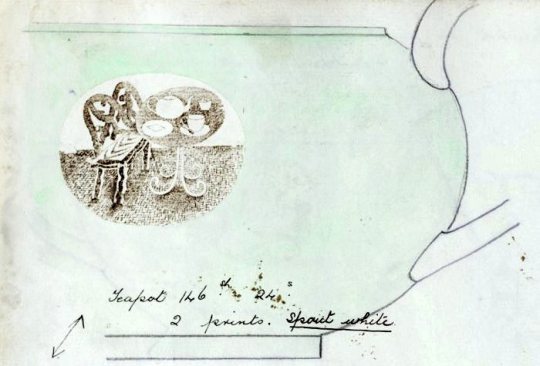
Eric Ravilious – Sketched idea for Teapot design, 1938
The finished design below, with the colouring in yellow, blue and green. The design has been made simpler and the shading is able to be more subtle as it will be printed on a metal plate, so there is more detail in the halftone lines. It was first used on a preserve jar for Wedgwood.
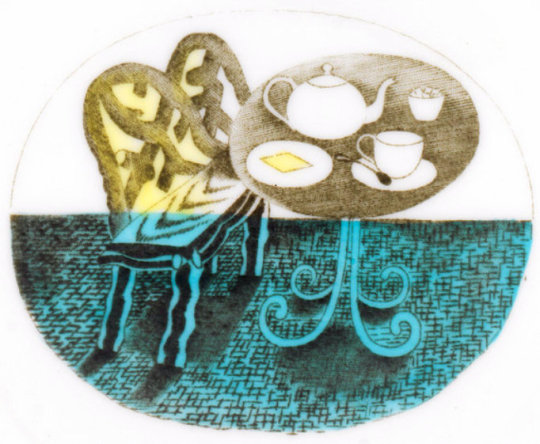
The preserve jar was introduced six months in advance of the rest of the pattern. The design was advertised in 1939 as being available also in breakfast and coffee sets; the war prevented production of these. At first unnamed, later called ‘Teaset’, the design was finally named ‘Afternoon Tea’.
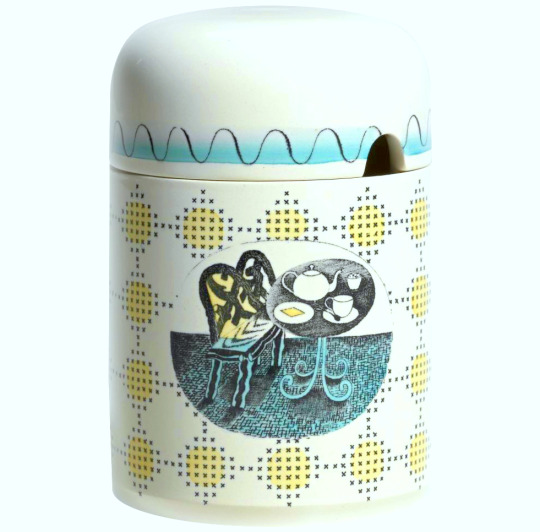
Here the tea-set is advertised in ‘The Studio Year Book of Decorative Art 1943-1948′ (the gap in printing is noted in the introduction due to WW2, lack of paper and designers being commissioned to do essential war work, this year book covers a wide range of time).
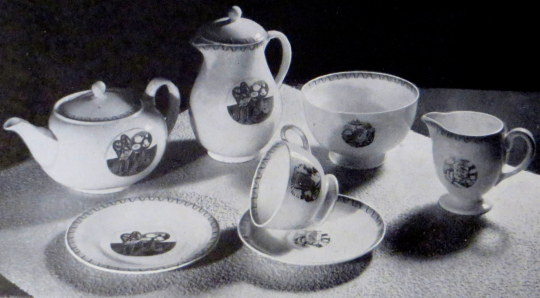
The Bone china tea ware decorated with motifs illustrating Afternoon Tea, printed in sepia and hand-coloured green. Designed by Eric Ravilious A.R.C.A. for Josiah Wedgwood and Sons. †
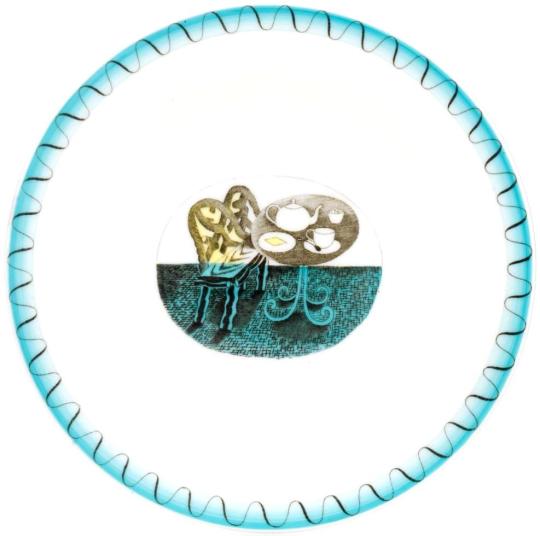
Here is a tea-plate from the set with the simple wave decoration on the perimeter of the plate and washed in blue enamel paint.

In this prototype photograph from 1938 the design is painted around with a pink glaze to the edge of the design and the Ravilious vignette and border uncoloured but printed in a brown sepia with the pink flooding over the whole plate. These are the rarest of all the designs as they were not put into production and the designs were modified to use less colour glaze after the war.
Twenty five years later the original woodblock design would be resurrected and used in a reduced size for advertising and on the covers of Country Walks booklets.
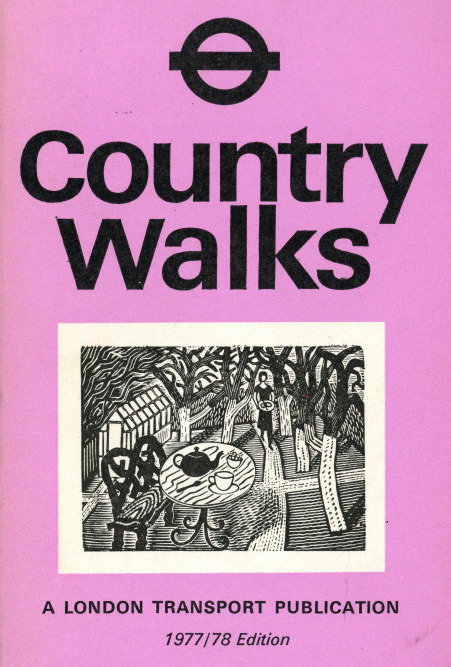
Country Walks with the Ravilious Engraving on the cover, 1978
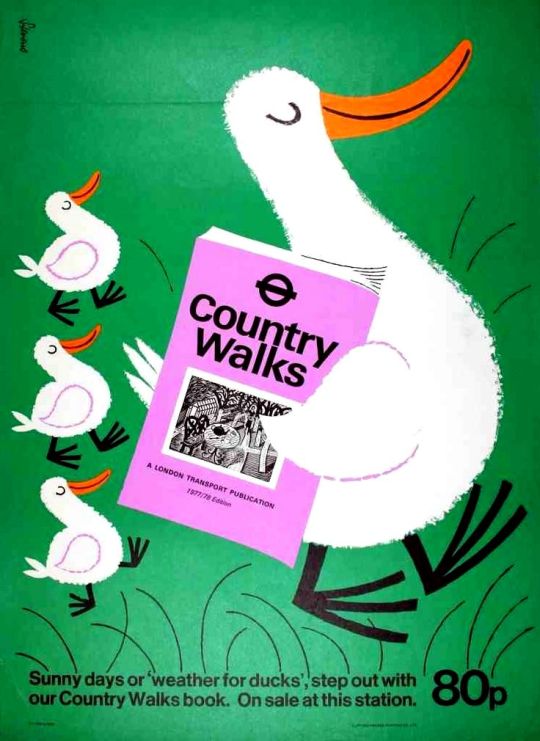
A rather fun and unusual poster for the Country Walks books by Harry Stevens, 1978.
Ravilious Engravings by Ravilious Jeremy Greenwood, Wood Lea Press, 2008.
Country Walks, London Transport, 1978.
Ravilious and Wedgwood: The Complete Wedgwood Designs of Eric Ravilious, 1995.
† The Studio Year Book of Decorative Art 1943-1948
